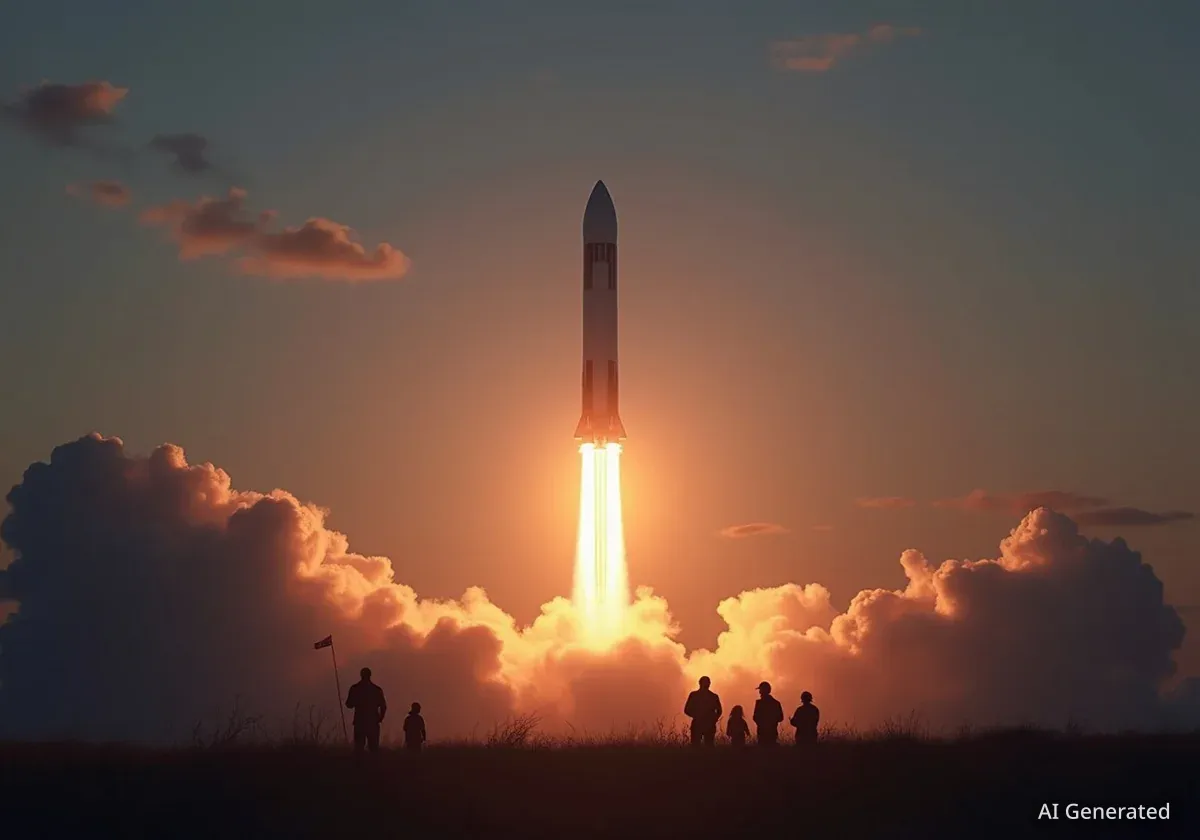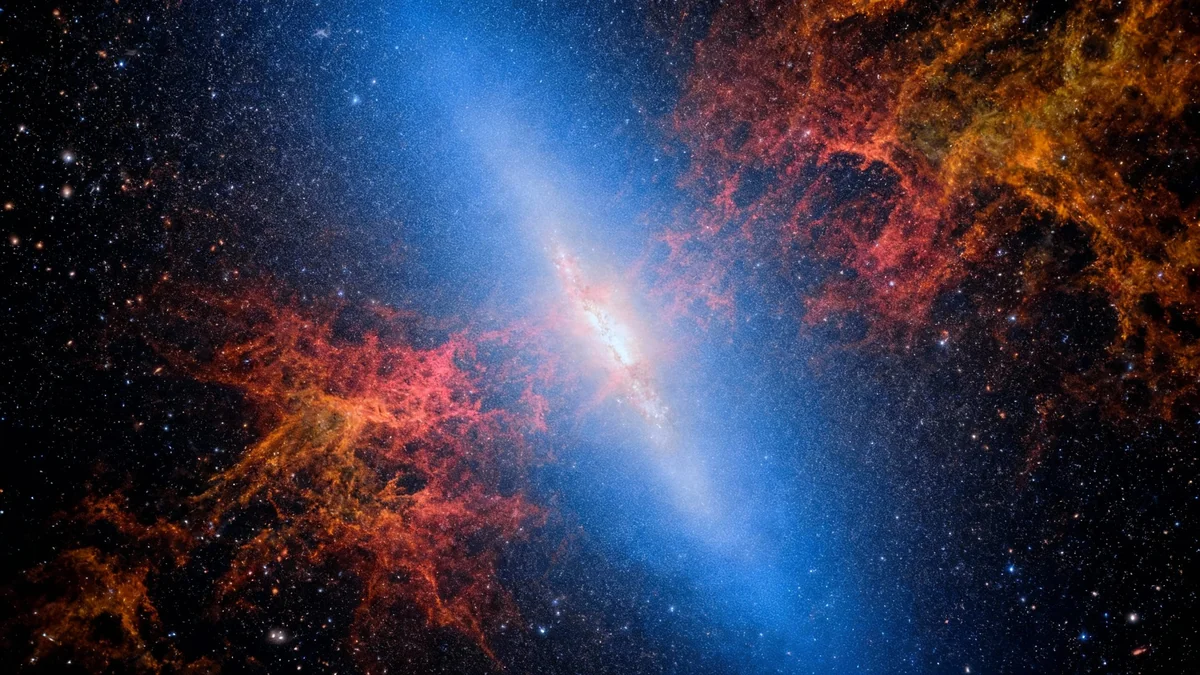Astronomers have released a remarkable new image showing a colossal cloud of gas and dust that resembles a bat in flight, stretching across a vast region of the Milky Way. Captured by the VLT Survey Telescope in Chile, the structure is an active stellar nursery located approximately 10,000 light-years from Earth.
The nebula's immense wingspan covers an area of the night sky four times larger than the full Moon. Its vivid red glow is the result of intense radiation from newborn stars ionizing the surrounding hydrogen gas, offering a detailed look into the processes of star formation.
Key Takeaways
- A new, highly detailed image of a bat-shaped nebula has been captured by the VLT Survey Telescope (VST) in Chile.
- The nebula is an active star-forming region, or stellar nursery, located about 10,000 light-years away.
- Its distinctive red color is caused by ionized hydrogen gas, energized by hot, young stars within the cloud.
- The image was constructed by combining data from two major astronomical surveys, VPHAS+ and VVV, which are open to the public.
A Celestial Giant Revealed
The newly imaged celestial object is an expansive molecular cloud situated between the constellations of Circinus and Norma. While it does not have an official name, its striking silhouette has earned it the informal title of the 'Cosmic Bat'.
The image was taken by the VLT Survey Telescope (VST), which is operated by the Italian National Institute for Astrophysics (INAF) and hosted at the European Southern Observatory’s Paranal Observatory in the Atacama Desert. Its powerful 268-megapixel OmegaCAM camera was essential for capturing the nebula's full scope and intricate details.
The sheer scale of the structure is difficult to comprehend. Spanning a significant portion of the southern sky, it highlights the immense size of the molecular clouds where stars are born.
Inside a Stellar Nursery
More than just a beautiful cosmic shape, this nebula is a dynamic environment where new stars are actively forming. The process begins within the densest, coldest parts of the cloud, which appear as dark, thread-like filaments in the image.
Anatomy of the Bat
Astronomers have identified specific regions within the nebula. The area forming the right wing is cataloged as RCW 94, while the body corresponds to RCW 95. These designations come from the RCW Catalog, which lists bright star-forming regions in the southern Milky Way.
These dark filaments are composed of thick dust that blocks light from background stars, creating the bat's skeletal appearance. Within these dusty cocoons, gravity pulls gas together until it collapses to form protostars.
Once these young stars ignite, they emit powerful ultraviolet radiation. This energy strips electrons from the surrounding hydrogen atoms—a process called ionization—causing the gas to emit its own light. This is the source of the nebula's prominent red glow, a signature of active star formation.
Combining Views to Uncover Secrets
This comprehensive view of the Cosmic Bat was made possible by combining data from two large-scale sky surveys. The VPHAS+ survey mapped this part of our galaxy in visible light, capturing the red glow of the ionized gas.
However, visible light cannot penetrate the densest dust clouds. To see what lies within, astronomers used data from the VVV survey, which observes the sky in infrared light. Infrared wavelengths can pass through thick dust, revealing the stars hidden inside and behind the nebula.
Open Access to the Cosmos
Both the VPHAS+ and VVV surveys make their data publicly available. This open-data policy allows scientists and amateur astronomers worldwide to explore the cosmos, analyze complex structures like the Cosmic Bat, and contribute to our understanding of how stars and galaxies evolve.
By layering observations from different filters that isolate specific wavelengths of light, researchers created a composite image that shows both the glowing gas and the dark, dusty structures in exceptional detail.
A Window into Galactic Evolution
Images like this one provide crucial information for astronomers studying the life cycle of stars. By observing stellar nurseries, scientists can better understand the conditions required for star birth and how these massive clouds of gas and dust are gradually dispersed by the very stars they create.
The data collected by instruments like OmegaCAM and VISTA, which was used for the VVV survey, contributes to a broader effort to map the Milky Way. These projects help researchers piece together the structure of our home galaxy and the fundamental processes that govern its evolution.
As technology advances, astronomers will continue to peer deeper into these cosmic clouds, uncovering more secrets about how stars, planets, and ultimately, galaxies themselves come into being.





